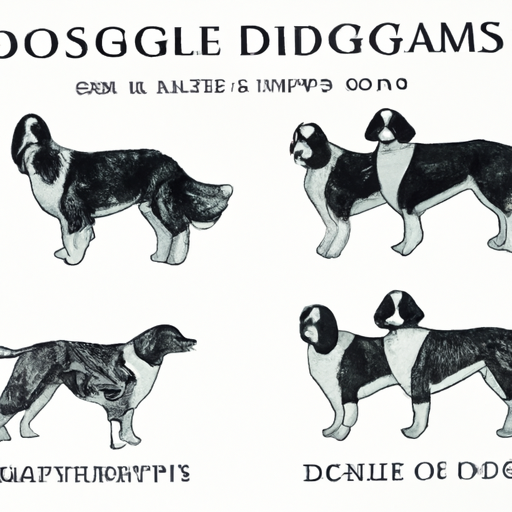As a caregiver, we know that you are always looking for ways to understand and care for your furry friends better. In this feature, we’ll delve into the world of dogs with double coats, exploring what they are, why they have them, and how to care for them.
1. Understanding Double Coats
Firstly, let’s understand what a double coat is. A double coat, also known as a two-layer coat, consists of two layers:
- An undercoat: This is a dense, wooly layer that is designed to keep your dog warm.
- A topcoat: This is a layer of guard hairs that protect your dog from the elements, such as sun, rain, and snow.
Dogs with double coats shed their undercoats twice a year, a process called “blowing their coat.” This is completely natural and is a way for the dog to regulate its body temperature.
2. Which Breeds Have Double Coats?
There are many breeds of dogs with double coats. Some of the most common include:
- Siberian Huskies
- Golden Retrievers
- German Shepherds
- Shetland Sheepdogs
- Bernese Mountain Dogs
Here’s a table that breaks down some of the most common double-coated breeds, their size, and their typical climate:
| Breed | Size | Typical Climate |
|---|---|---|
| Siberian Husky | Medium to Large | Cold |
| Golden Retriever | Large | Moderate to Cold |
| German Shepherd | Large | Moderate to Cold |
| Shetland Sheepdog | Small to Medium | Moderate |
| Bernese Mountain Dog | Large | Cold |
3. Why Do Dogs Have Double Coats?
Dogs have double coats to help them adapt to their environment. For instance, dogs that come from cold climates have a dense undercoat to keep them warm, and a waterproof topcoat to keep them dry.
On the other hand, dogs from warmer climates may have a thinner undercoat and a lighter topcoat to protect them from the sun and keep them cool.
4. How to Care for Dogs with Double Coats
Taking care of a dog with a double coat can require a little extra effort. Here are some tips:
- Regular brushing: This is crucial to maintain the health of the double coat and to prevent matting and tangling. It also helps to distribute natural oils that keep your dog’s coat healthy and shiny.
- Avoid shaving: It can be tempting to shave your double-coated dog in the summer, but this is typically not recommended. The double coat protects your dog from sunburn and overheating.
- Bathing: When bathing your double-coated dog, make sure to thoroughly rinse out any shampoo to prevent irritation and dryness.
- Healthy diet: A balanced diet contributes to a healthy coat. Foods rich in omega-3 fatty acids can help keep your dog’s coat shiny and healthy.
5. Myths About Double Coats
There are a few myths about double-coated dogs that need debunking:
- Myth 1: Shaving a double-coated dog will help keep them cooler in the summer. In fact, the opposite is true. The double coat actually helps regulate their body temperature and protect them from the sun.
- Myth 2: Double-coated dogs are hypoallergenic. This is not true. All dogs shed to some degree, and a double coat doesn’t mean they shed any less.
FAQs
Q: How often should I groom my double-coated dog?
A: Regular grooming is essential for double-coated dogs. Brushing should be done at least once a week, but some breeds might require daily brushing during their shedding season.
Q: Can any dog breed have a double coat?
A: No, only specific breeds have double coats. These are typically breeds that come from extreme climates and need the extra insulation.
Q: Do double-coated dogs shed more?
A: Yes and no. Double-coated dogs do shed their undercoat twice a year, which can seem like a lot. However, regular brushing can help manage this shedding.
Q: Is it harmful to shave a double-coated dog?
A: It can be. Shaving can interfere with the dog’s natural ability to regulate their body temperature and can expose them to the elements. It’s always best to consult with a professional groomer or vet before making the decision to shave a double-coated dog.
Q: Does a double coat mean my dog will be warmer in the winter?
A: Yes, a double coat provides extra insulation and can help keep your dog warmer in colder climates. However, it’s still important to provide them with adequate shelter from extreme temperatures.
We hope this guide has helped deepen your understanding of dogs with double coats. Remember, every dog is unique and requires tailored care. Whether your dog has a single or double coat, they’re sure to appreciate all the love and care you provide as their caregiver.



